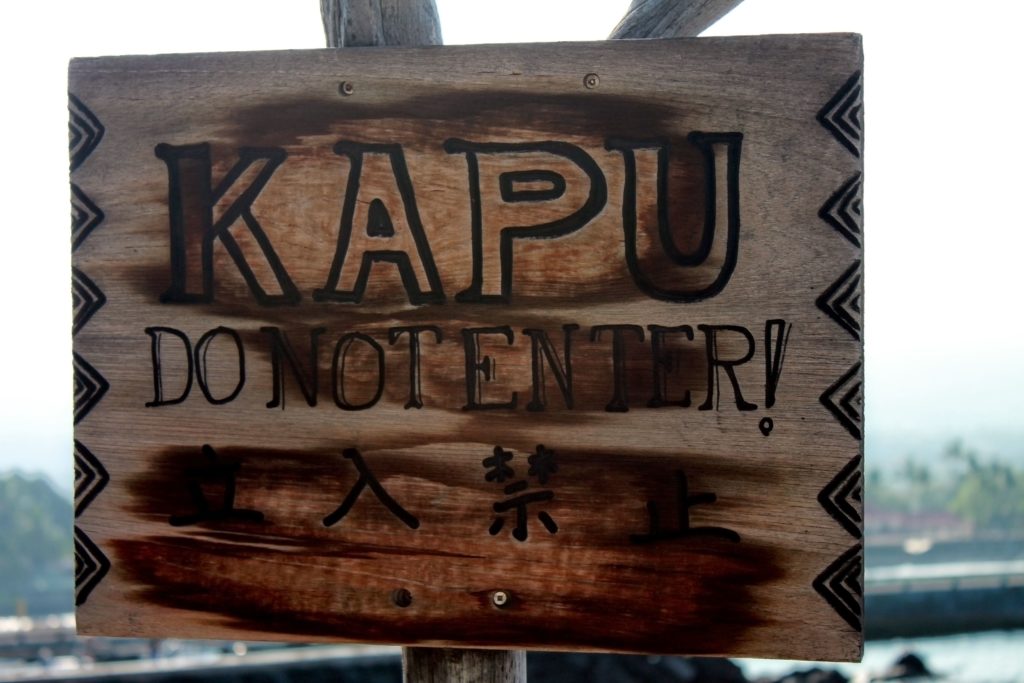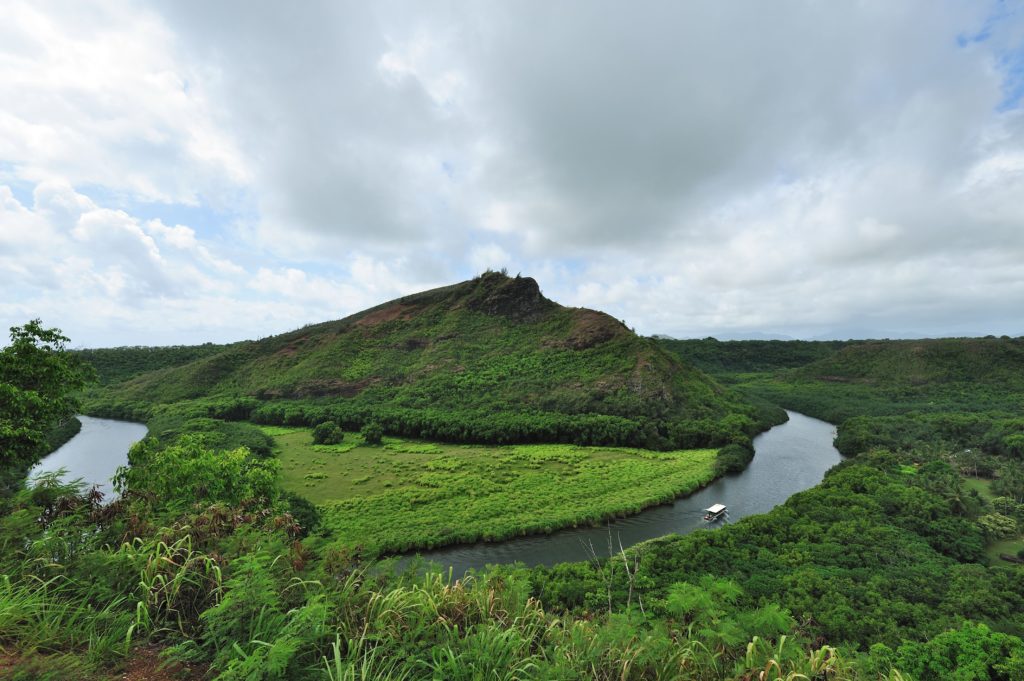Travel Pono and Respect Sacred Places

“Travel pono” means more than just taking care of the local flora and fauna, and staying safe while you visit. This phrase, which means “righteousness”, means that travelers should respect the historic cultural landmarks and sacred natural spaces found within the Hawaiian islands.
The Sign Says “Kapu”— What Next?
Protected cultural landmarks may be partially or fully restricted to the public. Travel pono sets an expectation that these sacred places may be for practitioners only, and parts of them may not be open to tourists.
If you see a sign that says “kapu”, this means “do not enter” or “forbidden”, and you should find another area to visit. In Hawaiian, “kapu” refers to the sacred law. Treating these cultural places as a significant part of Hawaiian culture means leaving them alone.
Many cultural spaces are open to visitors, and in these spaces, it is important to be thoughtful about the ways that you treat these locations. Don’t litter and keep on designated pathways. Bring an open mind and a desire to learn about the practices that make Hawaii unique.

For example, you can only visit Kahoolawe Island Reserve with special permission and as an invited volunteer. Additionally, the small Hawaiian island Niʻihau is closed to outsiders and is designed to protect the native residents who continue to practice the old Hawaiian ways.
Travel Pono and Learn About Hawaiian Culture

Many cultural places in Hawaii are available to tourists. Travel pono also means connecting with and learning about sacred places while also treating them with respect. Stay within designated areas as you travel. Consider volunteering your time with a cultural organization when visiting the islands. Volunteers are often able to take a behind the scenes look while also helping give back to the Aloha State.
Travelers can visit Hawaii Volcanoes National Park to see the Puu Loa Petroglyphs. These rock carvings offer a mysterious look at Hawaii’s past. You can also see Puuhonua o Honaunau National Historical Park, which contains large statues and a sacred temple. Those who broke the kapu, or sacred law, received clemency if they arrived at this historic place. These two Big Island treasures are open to the public and offer a look at Hawaii’s history.
According to legend, humanity was born from Kaneana Cave on Oahu. This cave can be visited today and is over 150,000 years old. On Kauai, you’ll find several heiau (sacred worship spaces) within Wailua River State Park. These include the temple site Poli’ahu Heiau and Holoholokū Heiau, which is a restored temple.
Simply put, there are a number of cherished cultural places to visit within Hawaii. Always remember to travel pono as you visit, follow posted signs, and treat every place with respect.
